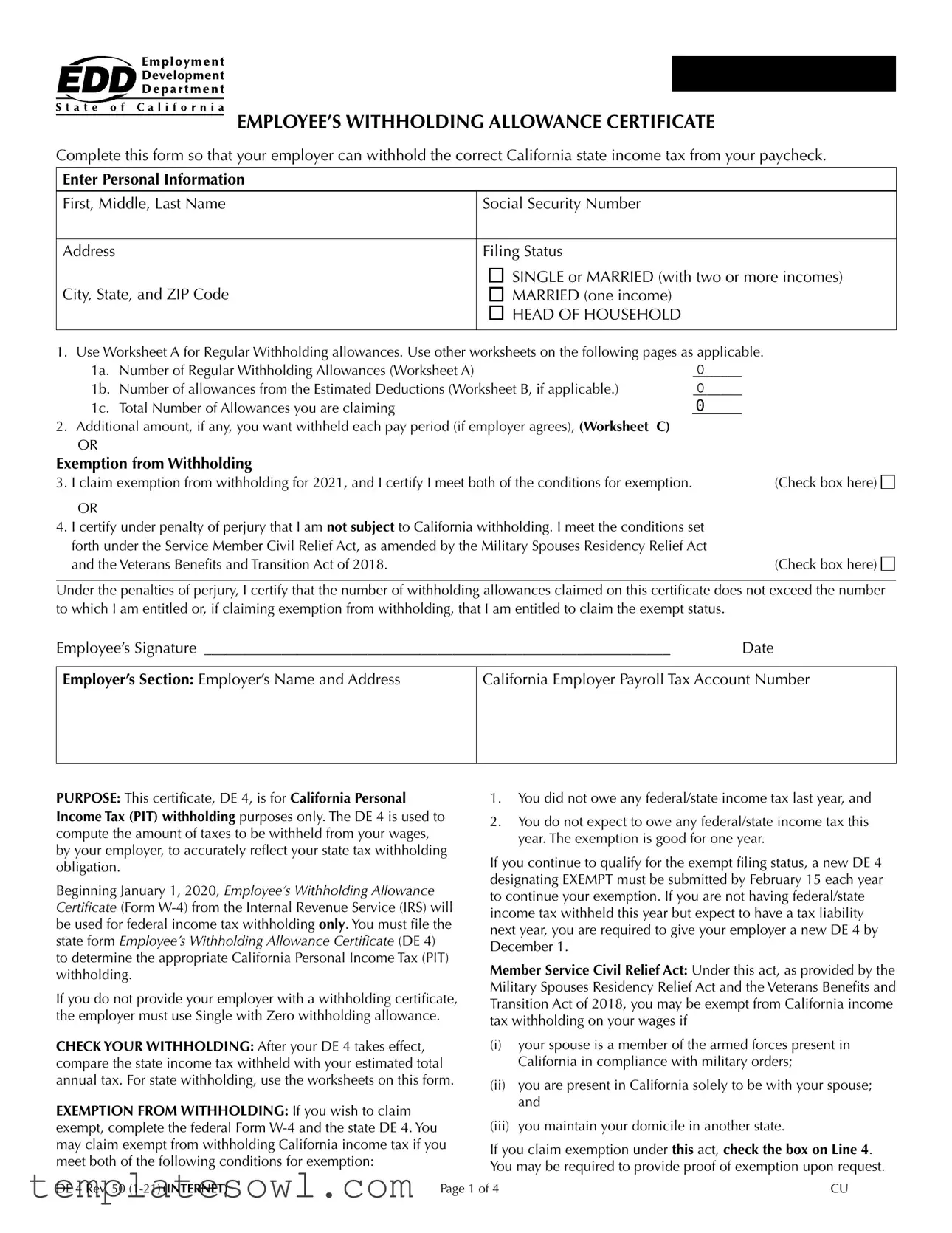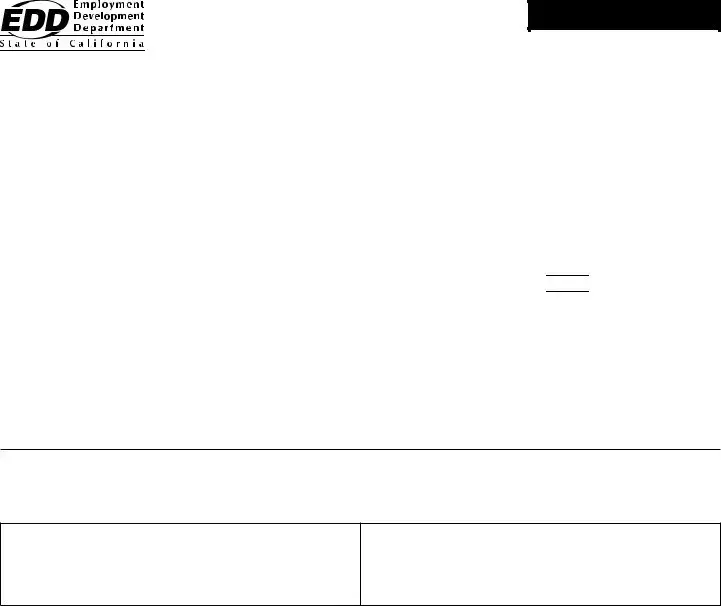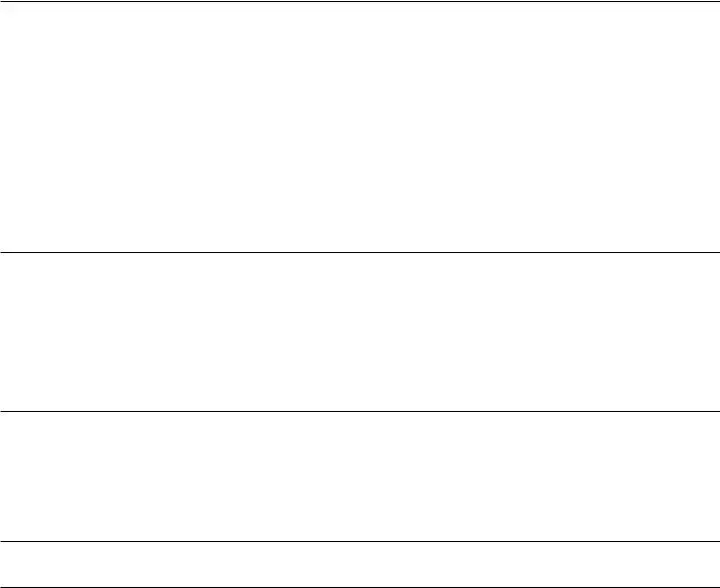What is the purpose of the California DE 4 form?
The California DE 4 form, or Employee’s Withholding Allowance Certificate, is used to help employers determine the correct amount of state income tax to withhold from employees' paychecks. It ensures that the withholding accurately reflects the employee's personal tax situation, considering factors such as filing status, number of allowances, and additional withholding preferences. Without a completed DE 4 form, employers must automatically withhold taxes assuming a single filing status with zero allowances, which may not accurately represent an employee's tax obligation.
How do I complete the DE 4 form?
To fill out the DE 4 form, employees should start by providing personal information, including their name, Social Security number, and address. They must select their filing status from the options provided, such as single, married with one income, or head of household. Next, employees will need to calculate their regular withholding allowances using Worksheet A. Potential additional allowances may be calculated from estimated deductions using Worksheet B. If applicable, employees can designate additional amounts to be withheld each pay period or claim an exemption from withholding if they meet specific criteria. Finally, the form should be signed and dated before submission to the employer.
What happens if I don't submit a DE 4 form?
If an employee fails to submit a DE 4 form, their employer is required to withhold taxes based on a single filing status with zero allowances. This means more tax could be taken out than necessary, leading to a larger refund at tax time (or a tax bill if the individual ends up owing taxes). However, this situation can also result in under-withholding for employees who have additional income sources, ultimately causing tax liability issues later on. It is crucial for employees to complete and submit the DE 4 as accurately as possible to avoid these potential challenges.
What if I claim exemption from withholding?
Employees can claim exemption from California income tax withholding if they meet two conditions: they did not owe any federal or state income tax last year and they do not expect to owe any income tax this year. If eligible, they should check the appropriate box on the DE 4. This exemption lasts for one year, meaning employees must submit a new DE 4 each year by February 15 to maintain their exempt status. If an employee claims exempt status but expects to owe taxes the following year, they must provide a new form by December 1 to avoid penalties.




